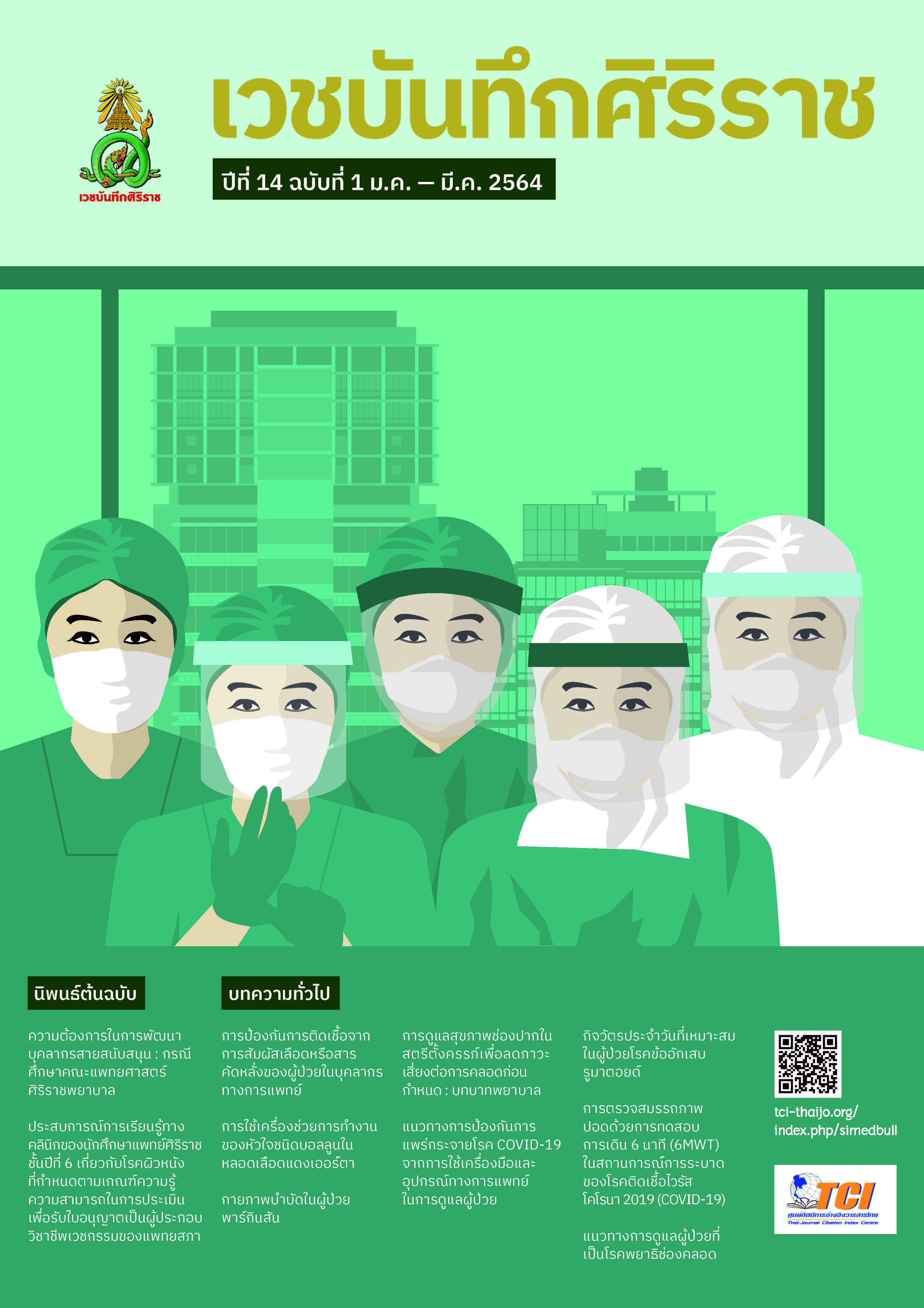Dermatologic Clinical Exposure in Sixth-Year Siriraj Medical Students Based on Thai Medical Competency Assessment Criteria for National License
Main Article Content
Abstract
Objectives: To investigate dermatologic clinical exposure in sixth-year Siriraj medical students based on Thai Medical Competency Assessment Criteria for National License.
Materials and methods: The present study was conducted at the Department of Dermatology, Faculty of Medicine, Siriraj Hospital, Mahidol University, Thailand. Dermatology clinical clerkship self-records from sixth-year medical students were retrospectively reviewed.
Results: A total of 285 students were included in this study. Of 18 ‘must know’ conditions, the mean number of diseases perceived by medical students was 11.3. Acne, eczema, alopecia and urticaria were seen by more than 80% of medical students, while impetigo, scabiasis and pediculosis were detected by less than 40% of medical students. As to 10 ‘should know’ conditions, the mean number of diseases perceived by medical students was 4.3. Only papulosquamous disorders were seen by more than 80% of medical students. Drug eruption, bullous dermatoses, carbuncle and erythema nodusum were observed by less than 40% of medical students. Mean percentages of the number of observed conditions were significantly different between ‘must know’ and ‘should know’ conditions (62.7% vs. 43.2%, respectively; p<0.001).
Conclusion: The majority of medical of students can observe ‘must know’ conditions and less than half of ‘should know’ conditions were perceived by medical students during dermatology clinical clerkship. Instructors need to find teaching strategies to complement gaps on learning unrecognized diseases.
Article Details
References
2. ประกาศแพทยสภาเลขที่ 12/2555 เรื่องเกณฑ์ความรู้ความสามารถในการประเมินเพื่อรับใบอนุญาตเป็นผู้ประกอบการวิชาชีพเวชกรรม พ.ศ. 2555
3. Davari P, Millsop JW, Johnson MAN, et al. Dermatology Medical Education: A Multicenter Survey Study of the Undergraduate Perspective of the Dermatology Clinical Clerkship. Dermatol Online J. 2017;23(12).


